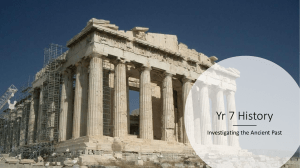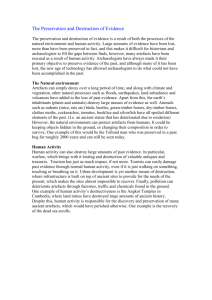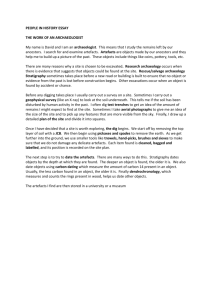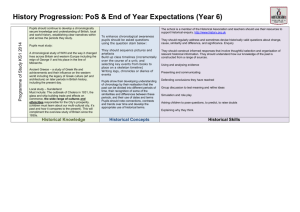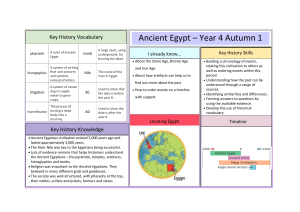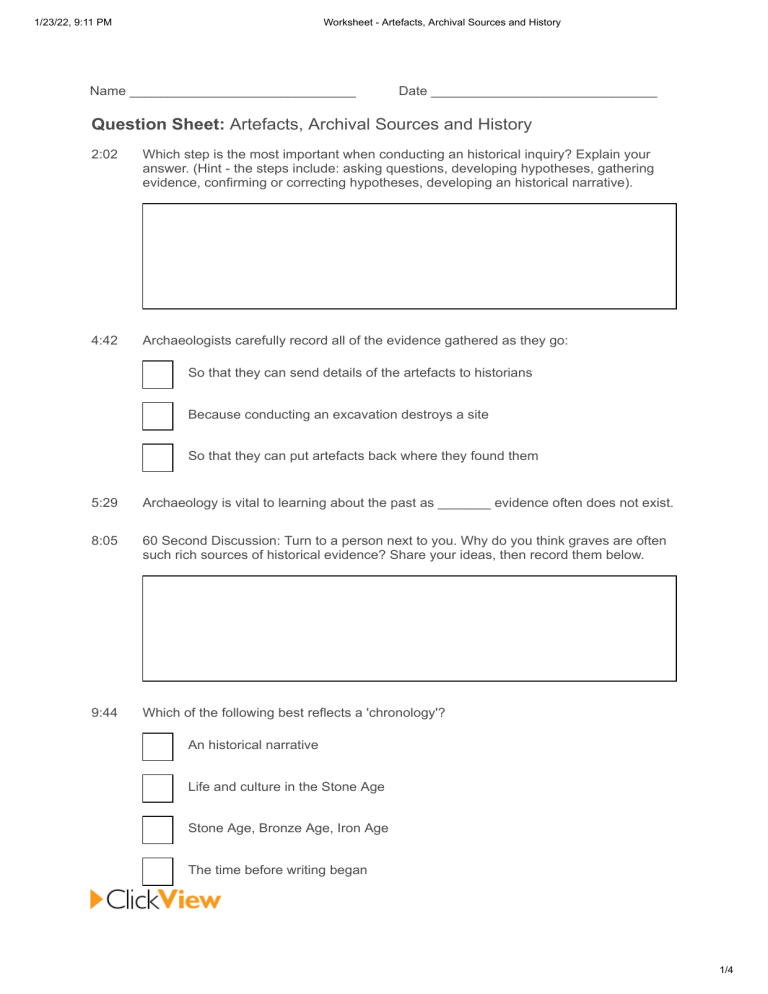
1/23/22, 9:11 PM Worksheet - Artefacts, Archival Sources and History Name ______________________________ Date ______________________________ Question Sheet: Artefacts, Archival Sources and History 2:02 Which step is the most important when conducting an historical inquiry? Explain your answer. (Hint - the steps include: asking questions, developing hypotheses, gathering evidence, confirming or correcting hypotheses, developing an historical narrative). 4:42 Archaeologists carefully record all of the evidence gathered as they go: So that they can send details of the artefacts to historians Because conducting an excavation destroys a site So that they can put artefacts back where they found them 5:29 Archaeology is vital to learning about the past as _______ evidence often does not exist. 8:05 60 Second Discussion: Turn to a person next to you. Why do you think graves are often such rich sources of historical evidence? Share your ideas, then record them below. 9:44 Which of the following best reflects a 'chronology'? An historical narrative Life and culture in the Stone Age Stone Age, Bronze Age, Iron Age The time before writing began 1/4 1/23/22, 9:11 PM Worksheet - Artefacts, Archival Sources and History 12:45 Describe one example of change in Ancient Australian cultures. 14:34 Which of the following are artefacts? (Select all that apply) Dances and plays performed by people Items that were made or changed by people Knowledge passed down through generations Objects that were used or valued by humans 17:18 Archival sources about Ancient Australian cultures were produced: During the time of Ancient Australia After the time of Ancient Australia Both during and after the time of Ancient Australia 19:51 Name one primary source and one secondary source that historians could use to learn about Australia’s involvement in the Second World War. 2/4 1/23/22, 9:11 PM 23:25 Worksheet - Artefacts, Archival Sources and History When examining historical evidence, it is important to: Consider the reliability and bias of all sources used Talk to people who lived during the period being studied Use only primary sources, as these are more reliable Use only secondary sources, as these are less biased 26:30 What primary sources give historians the best access to Ancient Australia's history? Artefacts and written sources Oral histories and written sources Photographs and oral histories Significant sites and artefacts 29:07 What challenges make it difficult for historians to learn about Ancient Aboriginal cultures? 30:53 Very little is known about Aboriginal cultures that existed before 18 000 BP. True False 3/4 1/23/22, 9:11 PM 33:27 Worksheet - Artefacts, Archival Sources and History What aspects of Ancient Aboriginal life can be understood through primary sources? (Select all that apply) Animals in the home Changes in technology Patterns of land use Sources of food 33:54 An anthropologist studies the languages, ________ and customs of different groups. 36:18 Give two reasons why it is important to preserve Ancient Aboriginal artefacts. 4/4
